If you own a Pomchi, you know they’re just the perfect snuggle size. They’re also the cutest lap buddies, comfortably resting their little bodies on your lap while you get things done.
And if you live in a small home with little-to-no yard space, Pomchi dogs won’t mind. Just as they have no problem living in small dwellings, these designer dogs travel light. They’re easy to take on both planes and cars.
And the best part? You can dress them! Put a Pomchi in a dog onesie, and it’s the cutest thing you’ll ever see.
However, there’s one significant drawback — they are more fragile because of their tiny size. This means you must be careful when handling, petting, and even grooming your Pomchi.
In this article, we’ll look at Pomchi’s personality, health issues, diet, etc., so you know how to pay more care to your furry friend.
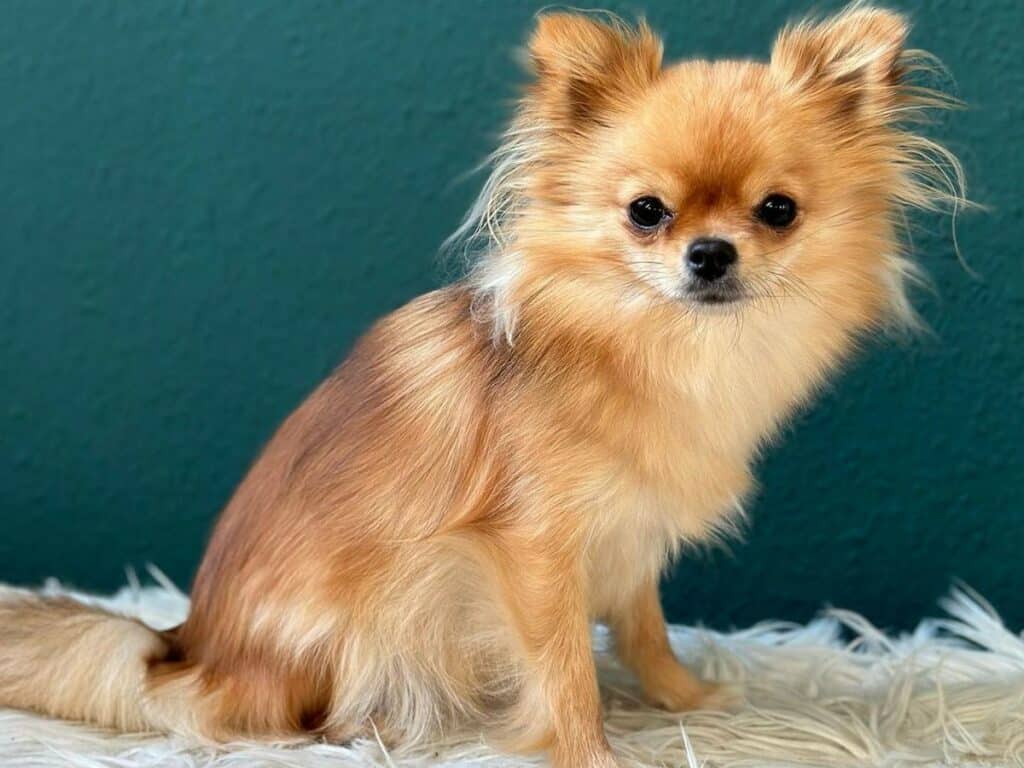
Quick Facts: Pomchi
Height
6 - 9Weight
5 - 12Lifespan
12 - 15Breed Size
small (0-25 lbs.)Breed Type
mixedBreed Group
companionTemperament
outgoing, playful, protective, affectionateGood With
families, other dogs, catsIntelligence
highShedding
infrequentExercise Needs
lowBarking Level
highEnergy level
highDrool Amount
lowCoat Type
long, short, mediumCoat Patterns
bi-color, black and tan, liver and tan, tri-colorColors
black, cream, fawn, gray, white, light brown, merle, tan, brownOther Characteristics
apartment-friendly, easy to groom, easy to train, good for first-time pet owners, strong loyalty tendenciesPomchi Highlights
- Pomchis were bred to develop a toy dog perfect for households seeking a loyal follower and friend.
- Pomchis are characterized by their vibrant temperaments and being sociable and adoring companions.
- They strongly commit to their owners and can act as vigilant guardians since they often vocalize and demonstrate active defense mechanisms.
- Pomchis possess a sweet nature which makes them perfect companions. Furthermore, they have a unique characteristic that is not common among many other breeds: their lifespans are notably long.
- Pomchis are known to be vocal. While this trait makes them ideal for protecting property and personal safety, it is essential that owners begin training their canine companions as soon as possible to prevent excessive barking behaviours.
- They adapt to living situations, whether a small apartment or rural home.
History
Part Pomeranian, part Chihuahua, this pup is the perfect blend of two pure breeds. The history of the Pomchi is fascinating and dates back centuries when these two breeds were first combined to create one of the most charming and captivating canines.
Australian Shepherd
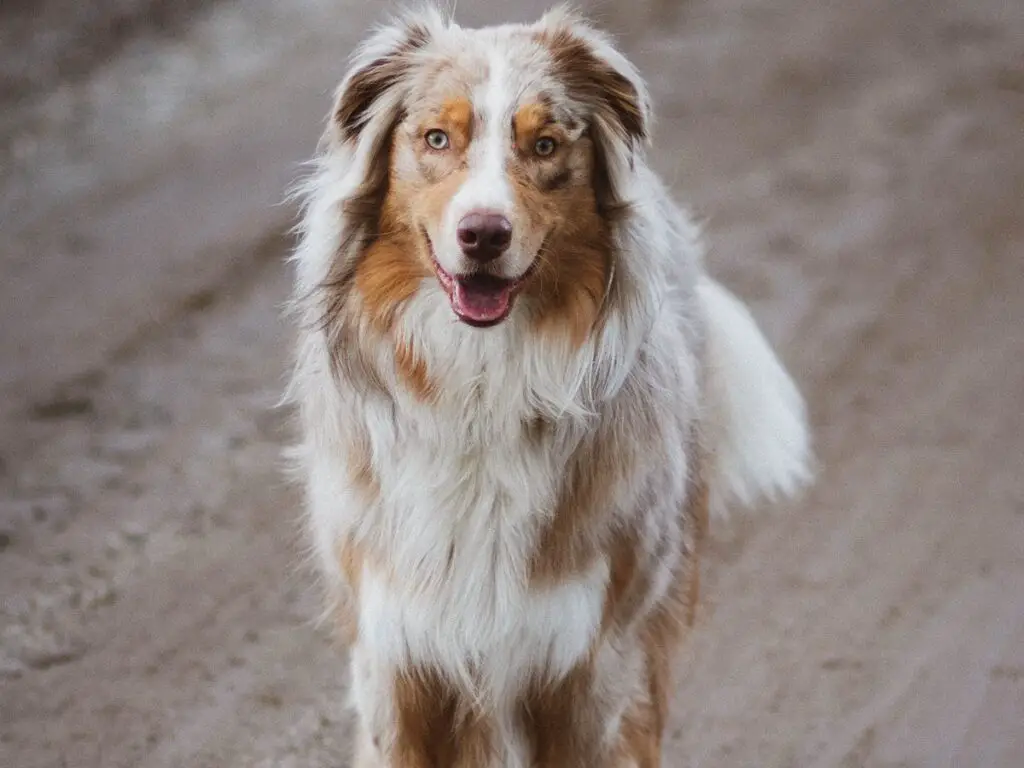
The origin of the Anatolian Shepherd Dog appears to date back to hunting dogs from Mesopotamia, suggesting a very ancient breed. Through the ages, they have been adapted to best suit their environment and responsibilities; this process was heavily impacted by factors such as duties, climate, and lifestyle.
This breed can be found in its homeland in Turkey, where it has traditionally served as a herder’s friend and guardian for livestock; it was selectively bred to share qualities with the farm animals so that potential threats would not be able to differentiate these shepherd dogs from their prey.
During the 1970s, breeders in Western countries began to exhibit increased interest in Anatolian Shepherds. They subsequently ignited a process by which landrace natural breeds could steadily be transformed into modern variants; this was achieved through various means, such as documenting origins from particular ancestors and forming breed standards that set forth requirements.
The first kennel likely arrived in America during the late 1930s, when they became part of a study that was intended to find what type of dog would make an exemplary sheepdog.
Great Pyrenees
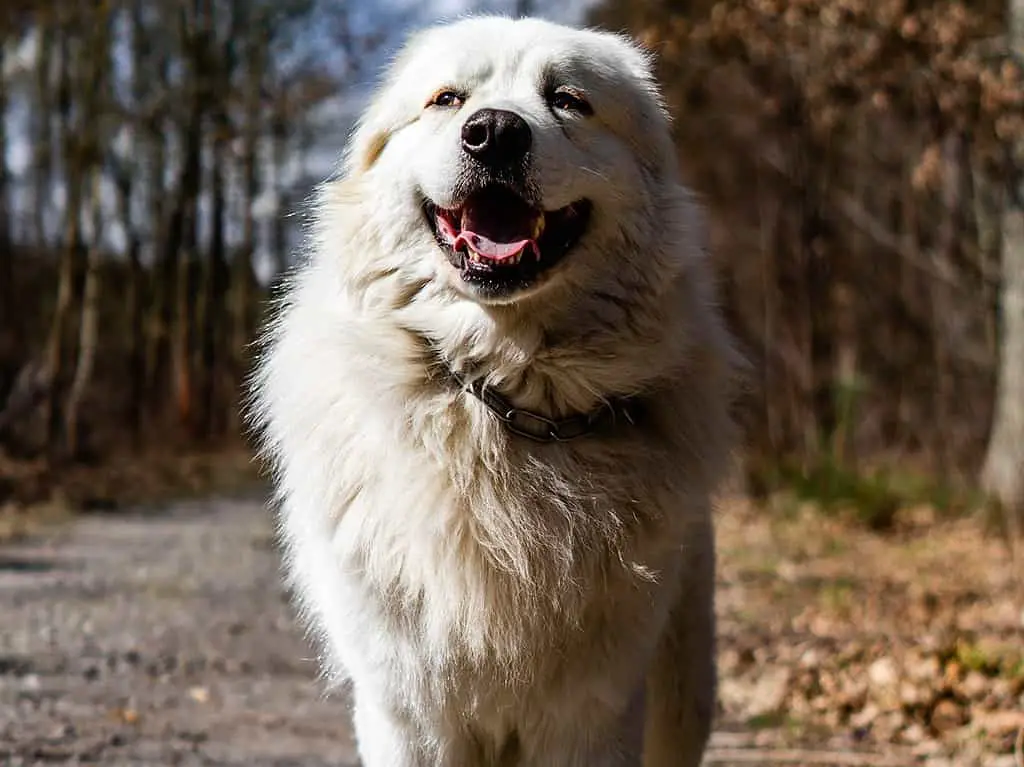
It is believed that the Great Pyrenees descended from a collection of predominantly white mountain flock guard canines dating back to around 10,000 or 11,000 years ago in Turkey. This theory is further supported by the likelihood that these large white dogs were brought to the Pyrenees Mountains with their herdsmen and domestic animals dating as far back as 3000 BC.
In 1931, Mr. and Mrs. Crane imported a number of Great Pyrenees in an effort to establish the breed in North America with the formation of Basquaerie Kennels at Needham, Massachusetts; their dedication to the cause enabled the breed to remain robust and continue developing. They also acquired valuable breeding stock from Europe prior to World War II restricting access from the continent.
On February 1935, the American Kennel Club approved the official standard of the Great Pyrenees, more commonly called Pyrs. Described by its characteristics as a kind, intelligent and regal breed of immense size, Pyrs can be a strong addition to any home.
Read also: 16 Reasons Why Chihuahuas Shake, Shiver & Tremble So Much
Appearance
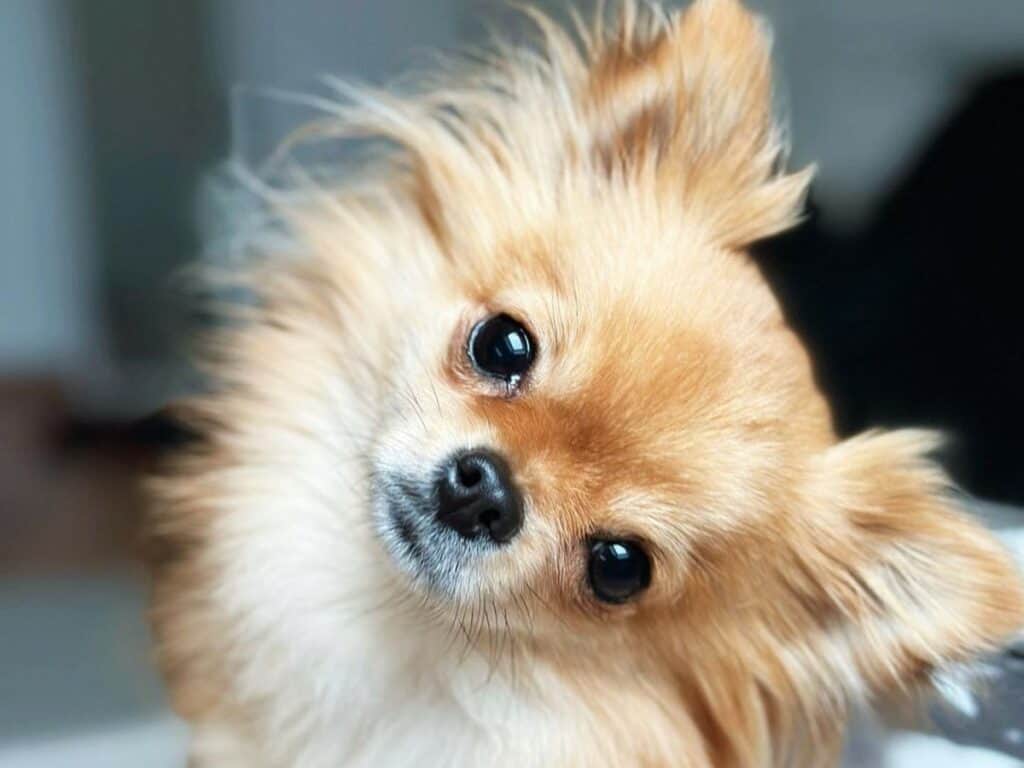
It is impossible to ascertain an accurate visual representation of the puppies due to the mixed breed nature. They could possess characteristics typically associated with Chihuahuas, such as shorter hair, or manifest attributes traditionally affiliated with their other parent breed — the surprise is half the fun.
Generally speaking, the Pomchi shares many features with little foxes. In addition to having large and circular eyes, their ears are typically upright, and their tails tend to curl partially.
Pomchi Size
Pomchis are canines of diminutive stature, reaching approximately 6 to 9 inches in full adulthood and typically weighing 5 to 12 pounds.
The Pomchi’s small size facilitates journeys and basic caretaking, including walking. Elderly individuals, who may struggle with stability, particularly benefit from a pet which requires minimal effort to manage on a walk.
Pomchi Coat and Colors
Pomchi canines possess a set of characteristics that make them especially desirable; their size and portability allow for ease of travel while their attractive appearance draws in admiring glances. As a Pomchi owner, it is to be expected that people will often ask questions when you take the dog out in public. Be prepared to answer inquiries regarding your pet regularly.
This increased social recognition could be because of their physical characteristics, a combination of the Pom’s and ox-like traits, with some having potentially double coats depending on the parentage.
Their coat can vary from short to long and come in many colors such as sable, white, cream, black, gray, dark brown, merle, tan fawn and light brown.
Personality
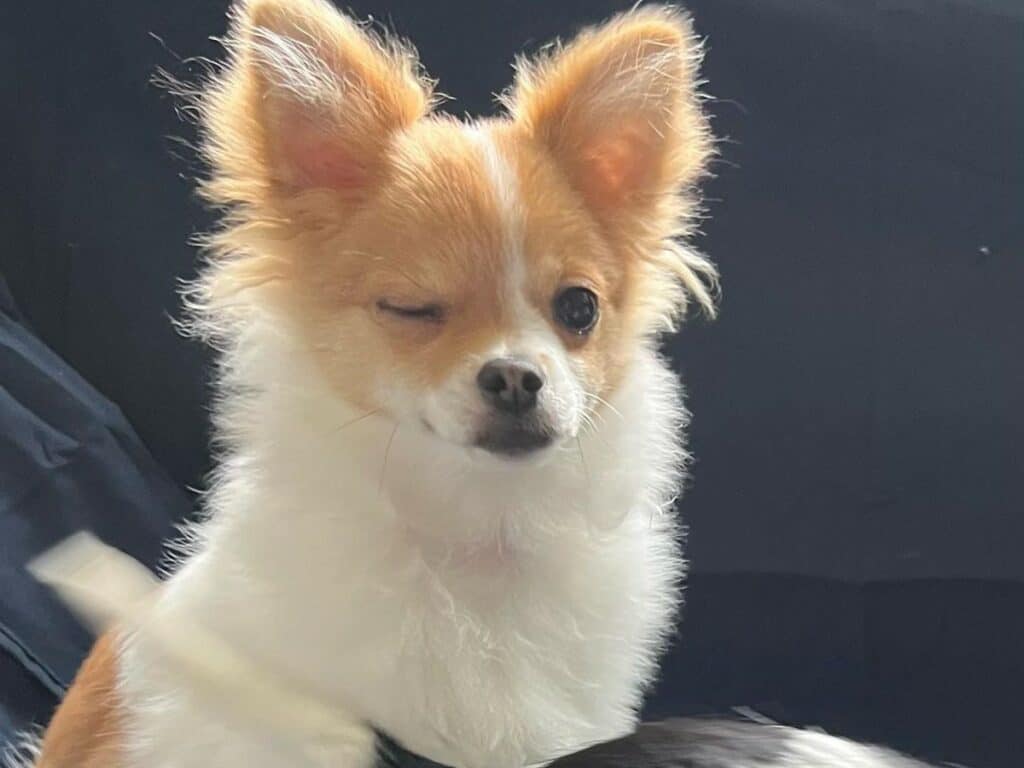
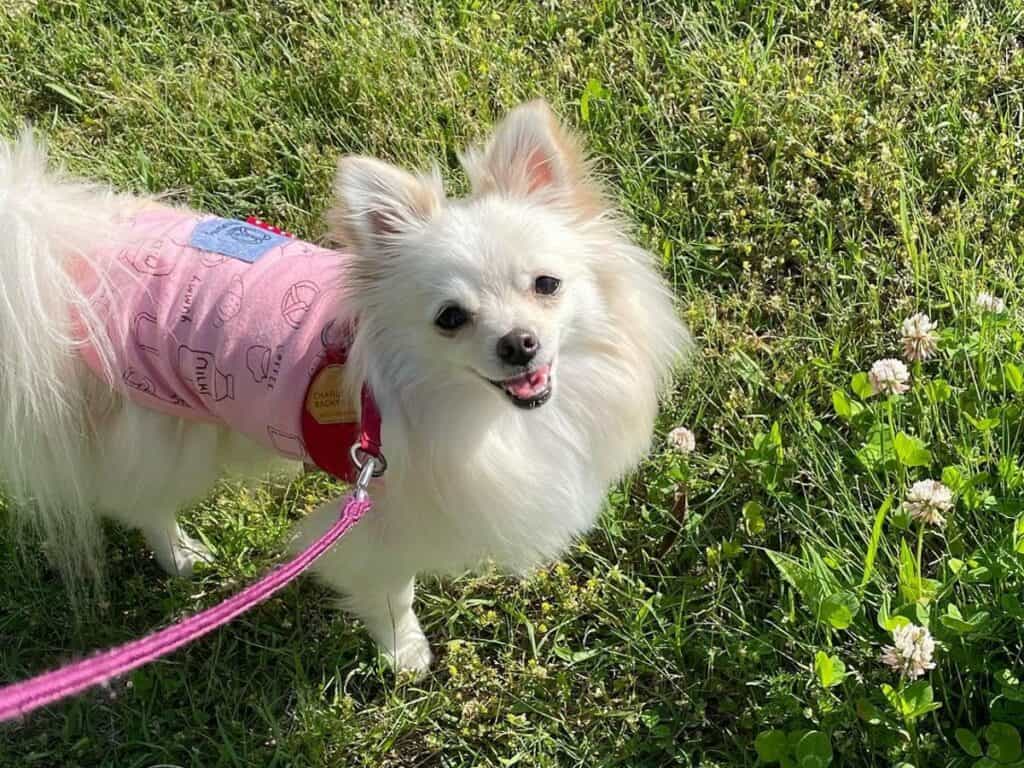
Pomchis are known for their dynamic demeanors in a diminutive frame. They demonstrate liveliness, alertness, and curiosity, providing an ideal combination of vigor and pleasantry. These canines are effective companion animals. Unfortunately, they often suffer from anxiety, which may cause them to react hostilely due to their courageous and bold natures.
They are highly intelligent breeds with pleasing personalities when appropriately socialised. Undoubtedly loyal to their owners, these dogs are also very effective guard animals due to their vocal nature and feisty behaviour.
Due to their diminutive size and delicate nature, Pomchis should not be left unmonitored with young children who have not been properly instructed to interact safely and responsibly around them.
Health
The gene pool among Pomeranians is quite limited; hence crossbreeding with Chihuahuas can aid in enhancing their wellness on a genetic level. However, Pomchis may be prone to health issues shared by both breeds.
Dental Problems: Similar to Pomeranians and Chihuahuas, Pomchis may be vulnerable to dental complications, including accumulating tartar on their teeth that could become increasingly worse and eventually lead to gum and teeth infection.
It is essential to ward off potential dental complications, as their presence can adversely affect your dog’s overall well-being and life expectancy. As such, following regular dental hygiene practices is imperative.
Collapsed Trachea: Pomchis may suffer from weakened or otherwise compromised tracheal cartilages, leading to a condition known as tracheal collapse. Symptoms include intolerance of strenuous activities, difficulty breathing, and coughing. Medical therapy is necessary for the successful management of these issues.
Patellar Luxation: Patellar luxation is common among small and toy breeds and mixed-breed dogs. It is characterized by the dislocation of the kneecap, resulting in pain and disability.
In most cases, anti-inflammatory medications are typically the first line of treatment for patellar luxation. However, more severe circumstances may call for a surgical procedure.
Hypoglycemia: Chihuahuas are particularly prone to a condition called hypoglycemia. Due to this risk, puppies produced from Chihuahua parents may also be subject to the same condition.
Signs of hypoglycemia in Pomchis can include fatigue and shaking. A way to prevent the condition is to feed these dogs multiple times daily and refrain from intense activity.
Lifespan
On top of its undeniable cuteness, this breed’s lifespan is another great thing.
The Pomchi typically lives between 12 to 15 years. Not only does this mean plenty of time for playtime and cuddles with your pup, but it also mitigates anxieties about them not being around for a long period of time.
For the best well-being of Pomchis throughout their lives, they must have adequate exercise daily and be surrounded by loving family members to ensure contentment and physical health into their senior years.
Care
Pomchis are content with minimal physical activity yet should be taken for regular walks to benefit from fresh air and natural stimuli. Going outside can increase stimulation, allowing them to remain physically and mentally engaged. Simultaneously, it provides an avenue for fostering social skills in both human and canine companions.
Pomchi dogs take their daily strolls seriously and love having a little fun. Make sure to stock up on Pomchi-approved toys for them to interact with.
It is equally important that potential owners understand these dogs have independent personalities, which can make them difficult to train. As a result, one should be prepared to dedicate time and effort to training this intelligent breed.
The difficulty lies in inspiring your pooch to the extent that he will be enthusiastic and willing to comply with commands. If you wish for a canine companion who is easy to teach, then a Pomchi may not be your best option.
The most successful course of action when training a Pomchi is to use positive reinforcement, in addition to exhibiting immense patience and maintaining consistent practice. Consider reading instructional books on how best to work with dogs to ensure an optimal training plan.
Diet
Despite their relatively diminutive size, these dogs still require sustenance; in particular, they need an average daily intake of approximately 40 calories per pound of body weight, equating to a half cup of kibbles.
Read also: How Many Cups Are In A Pound Of Dog Food?
We suggest that Pomchis consume meals tailored to their size, typically kibble. To ensure healthy dental hygiene and reduce the risk of joint complications, we advise against wet food for this type of canine.
It may take time to find food that Pomchi dogs will accept, so patience is key. If you obtain your pup from a breeder, keep them on the same diet they are accustomed to.
And remember: Whatever food you choose to feed your canine should have a notably high protein content and none of the ingredients, such as artificial food dyes, corn syrup, and cereals.
Despite their small size, Pomchis are vulnerable to obesity, a plight that can be easily brought on by the unwitting feeding patterns of their loving owners. After calculating your pet’s daily nutritional needs, ensure you plan accordingly and set aside a portion for dog training activities. Additionally, healthy treats or fruit can be beneficial as reinforcement rewards during these sessions.
Grooming
Pomchis are known to be moderate shedders; however, those with longer coats will require more frequent grooming and brushing. It is recommended that these pets be combed and brushed at least once a week to maintain healthy fur.
Due to the Pomchi’s delicate skin, it is recommended to use a brush with soft bristles rather than those made of metal that may cause discomfort and irritation. Furthermore, consistent nail trimming and oral hygiene should be included in regimens related to the proper grooming of a Pomchi.
Pomchi Puppies
The genetic and behavioral characteristics passed down to Pomchi puppies from their parents are not limited solely to physical traits; they also inherit a certain value. If either the Pomeranian or Chihuahua is from desirable, costly breeds, then the price for the Pomchi pup may amount to similar fees.
Crossbred puppies are typically more affordable than purebred, but the Pomchi is an exception. A notably new crossbreed, the Pomchi is comparatively expensive.
If you are considering a Pomeranian or Chihuahua mix but not necessarily the Pomchi, check out these mixed dog breeds:
Chihuahua Pug Mix: What You Need To Know About This Dog
Pitbull Chihuahua Mix Dog Breed: Personality, Care, Diet, & More
Children and Other Pets
Pomchis typically form a strong bond with children when they have had extended exposure to their presence during formative years. Nonetheless, it is paramount to always supervise any interaction between children and canines for safety reasons.
Remember that a Pomchi may be more fragile than larger dog breeds. Exercise caution when introducing a Pomchi into a home with larger breeds. The size difference between the two animals can result in accidental injury to the toy-sized Pomchi.
Rescue Groups
Despite the high demand for them, there is a significant population of these animals in need of being cared for by rescue groups and shelters.
Adoption is a viable and sensible solution if you wish to reduce the number of Pomchis needing rescue from local shelters.
The following are everal rescue organizations dedicated to neglected Pomeranian and Chihuahua pets that actively encourage individuals to foster them in their own homes.
Peace Love and Poms Rescue (PLPR) – Pennsylvania
Pomeranian Club of Michigan Rescue (PCMR) – Michigan
Pampered Poms Rescue (PPR) – Kansas
Recycled Pomeranians & Schipperkes (RPST)
Pomeranian Club of Central Virginia Rescue (PCCVR)
Southern California Pomeranian Rescue (SCPR)
Chihuahua & Small Dog Rescue, Inc. – Colorado
Texas Chihuahua Rescue (TXCR) – Texas
Pomchi FAQS
Is a Pomchi a good dog?
The answer depends on what you’re looking for in your furry family member. If you want an affectionate lap dog who loves cuddles and snuggles, then your Pomchi will be happy to oblige. These bright-eyed canines have plenty of energy for daily walks or playful fetch sessions in the park, and they’ll happily follow their owners around all day just to be near them.
How big is a full-grown Pomchi?
Pomchis are small-sized dogs that stand roughly 6 to 9 inches in full adulthood and weigh 5 to 12 pounds.
What is the lifespan of a Pomchi?
Pomchis can make perfect lifelong companions, with a lifespan of 12 to 15 years.
Are Pomchi dogs smart?
The Pomchi is a mix between the Chihuahua and the Pomeranian, two breeds known for their intelligence. That’s why Pomchis are also unsurprisingly intelligent, quickly picking up on commands from their owners.
Are Pomchis loyal?
Yes, Pomchis possess strong loyalty tendencies. In fact, they usually select one individual from the family as their favorite, while still exhibiting amiability and understanding toward other house members.
Pomchi Fun Facts
- The popular TikTok account @puppysongs has two Pomchi siblings as its main stars.
- Various labels have been attributed to the Pomchi breed, including Chiranian, Pomahuahua, Chipom, and Chimeranian.
- In 2021, the celebrity Sofia Vergara welcomed a Pomchi companion into her home, whom she named ‘Bubbles’. Bubbles unexpectedly attached itself to her husband, Joe Manganiello, rather than her. This occurrence speaks to the loyalty of the breed.
References
Idowu, O., & Heading, K. (2018). Hypoglycemia in dogs: Causes, management, and diagnosis. The Canadian Veterinary Journal, 59(6), 642.
Della Maggiore, A. (2014). Tracheal and airway collapse in dogs. Veterinary Clinics: Small Animal Practice, 44(1), 117-127.




